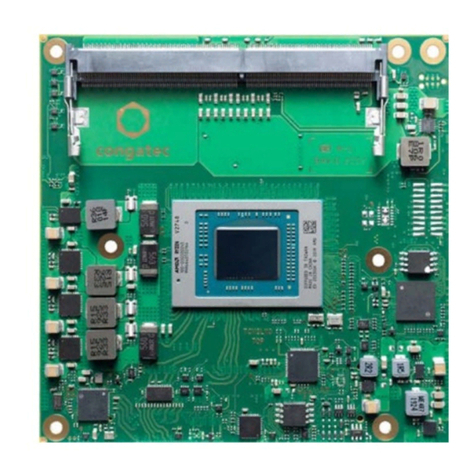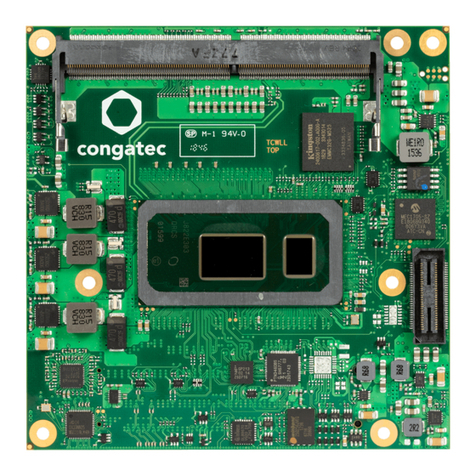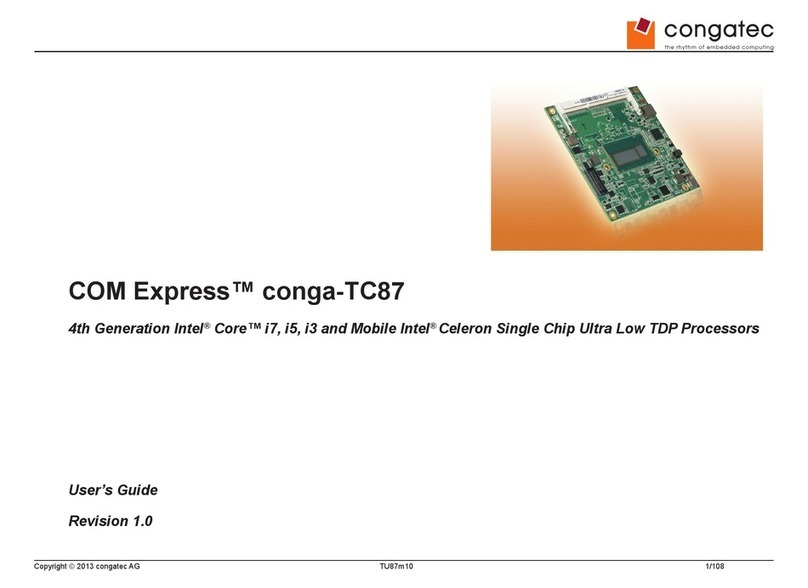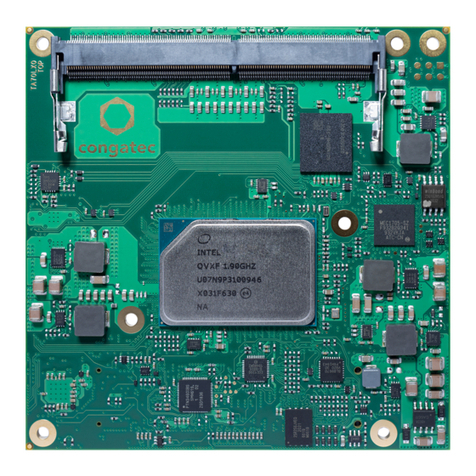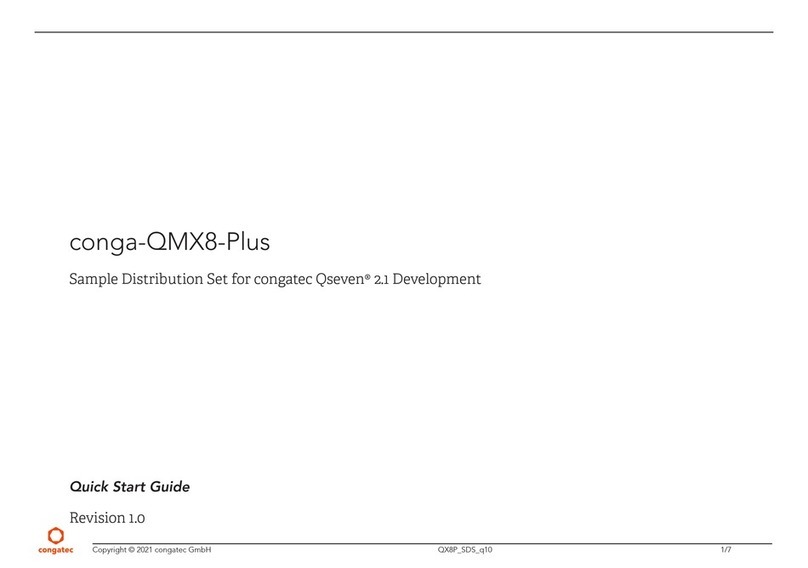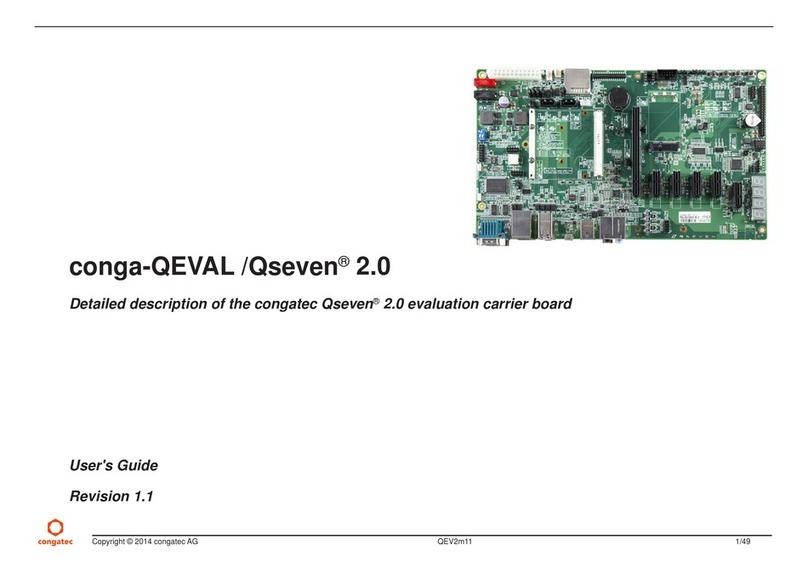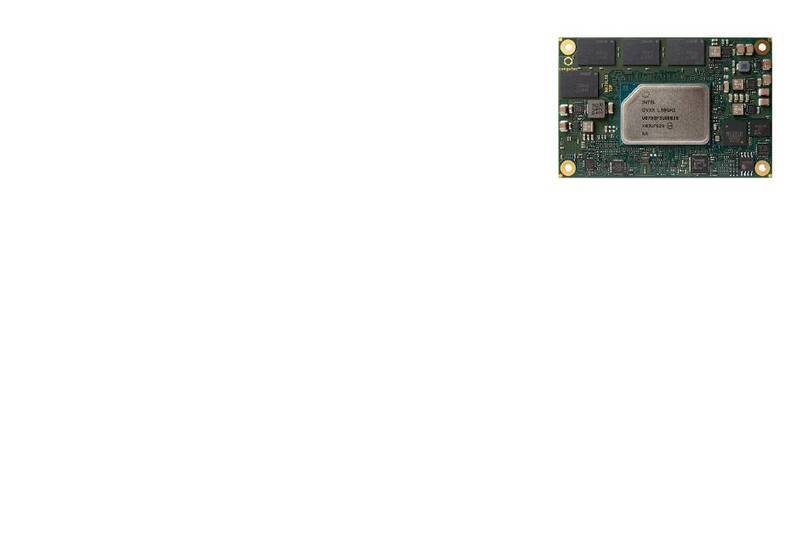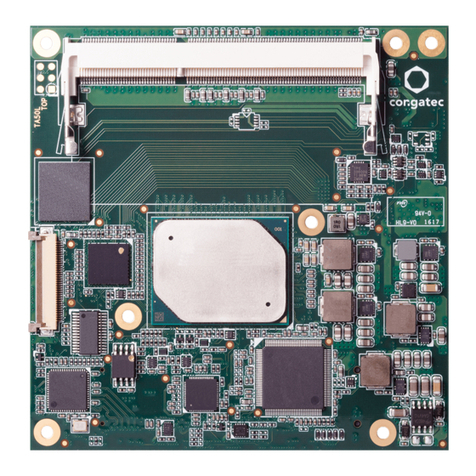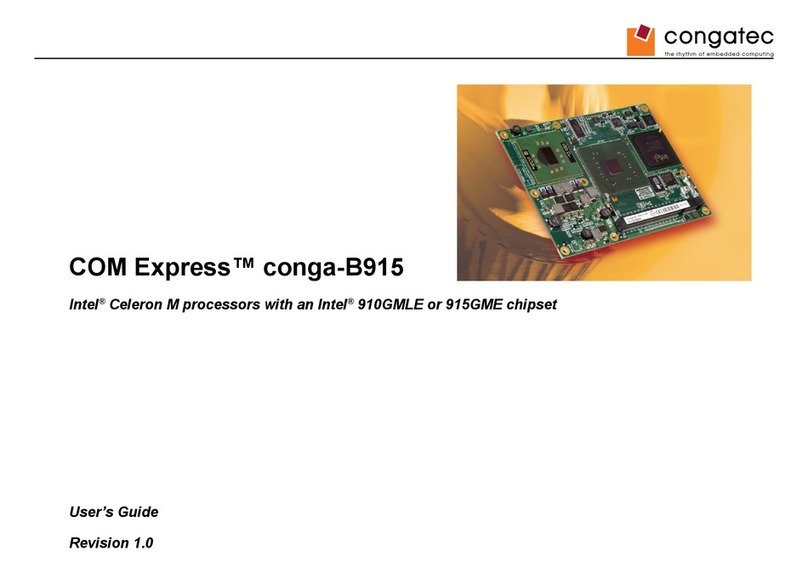
Copyright © 2013 congatec AG QMX6m03 8/63
Contents
1 INTRODUCTION ..................................................................... 11
2 Specications........................................................................... 13
2.1 Feature List .............................................................................. 13
2.2 Supported Operating Systems................................................. 14
2.3 Mechanical Dimensions ........................................................... 14
2.4 Supply Voltage Standard Power .............................................. 15
2.4.1 Electrical Characteristics.......................................................... 15
2.4.2 Rise Time ................................................................................. 15
2.5 Power Consumption................................................................. 16
2.5.1 Freescale® i.MX6 Cortex A9 1.0 GHz Single Core 512kB L2 cache
17
2.5.2 Freescale® i.MX6 Cortex A9 1.0 GHz Dual Lite 512kB L2 cache17
2.5.3 Freescale® i.MX6 Cortex A9 1.0 GHz Dual Core 1MB L2 cache18
2.5.4 Freescale® i.MX6 Cortex A9 1.0 GHz Quad Core 1MB L2 cache18
2.5.5 Freescale® i.MX6 Cortex A9 1.0 GHz Quad Core 1MB L2 cache18
2.5.6 Freescale® i.MX6 Cortex A9 800 MHz Single Core 512kB L2
cache (2GB eMMC) ................................................................. 19
2.5.7 Freescale® i.MX6 Cortex A9 800 MHz Dual Lite 512kB L2 cache
(2GB eMMC)............................................................................ 19
2.5.8 Freescale® i.MX6 Cortex A9 800 MHz Dual Core 1MB L2 cache
(2GB eMMC)............................................................................ 19
2.5.9 Freescale® i.MX6 Cortex A9 800 MHz Quad Core 1MB L2 cache
(2GB eMMC)............................................................................ 20
2.6 Supply Voltage Battery Power ................................................. 20
2.6.1 CMOS Battery Power Consumption ........................................ 20
2.7 Environmental Specications................................................... 21
3 Block Diagram.......................................................................... 22
4 Heatspreader ........................................................................... 23
4.1 Heatspreader Dimensions ....................................................... 24
5 Connector Subsystems............................................................ 26
5.1 PCI Express™ ......................................................................... 27
5.2 UART/RS-232 .......................................................................... 27
5.3 Gigabit Ethernet ....................................................................... 28
5.4 SATA ........................................................................................ 28
5.5 USB 2.0.................................................................................... 28
5.6 SD/SDIO/MMC......................................................................... 29
5.7 HDA/I2S/AC’97 ........................................................................ 29
5.8 LVDS........................................................................................ 29
5.9 HDMI........................................................................................ 30
5.10 LPC/GPIO ................................................................................ 30
5.11 SPI ........................................................................................... 31
5.12 CAN Bus .................................................................................. 31
5.13 Manufacturing/JTAG Interface ................................................. 31
5.14 Power Control .......................................................................... 31
5.15 Power Management................................................................. 33
5.16 Watchdog................................................................................. 33
5.17 I2C Bus .................................................................................... 34
6 Additional Features .................................................................. 35
6.1 High Assurance Boot (HAB)..................................................... 35
6.2 Dedicated Hardware Accelerators ........................................... 35
6.3 Power Management................................................................. 35
6.4 Dynamic Voltage and Frequency Scaling ................................ 35
6.5 Smart Speed Technology......................................................... 36
6.6 Suspend Mode......................................................................... 36
7 ARM Technologies ................................................................... 37
7.1 Media Processing Engine (MPE-NEON) ................................ 37
7.2 Jazelle DBX ............................................................................. 37
7.3 TrustZone................................................................................. 37
7.4 Floating Point Unit.................................................................... 37
8 conga Tech Notes .................................................................... 38
8.1 Freescale®i.MX6 Processor Features ..................................... 38
8.1.1 Temperature Monitor (TEMPMON).......................................... 38
8.2 Thermal Management.............................................................. 38
8.3 Audio Mux ................................................................................ 39
8.4 LVDS Bridge ............................................................................ 39
